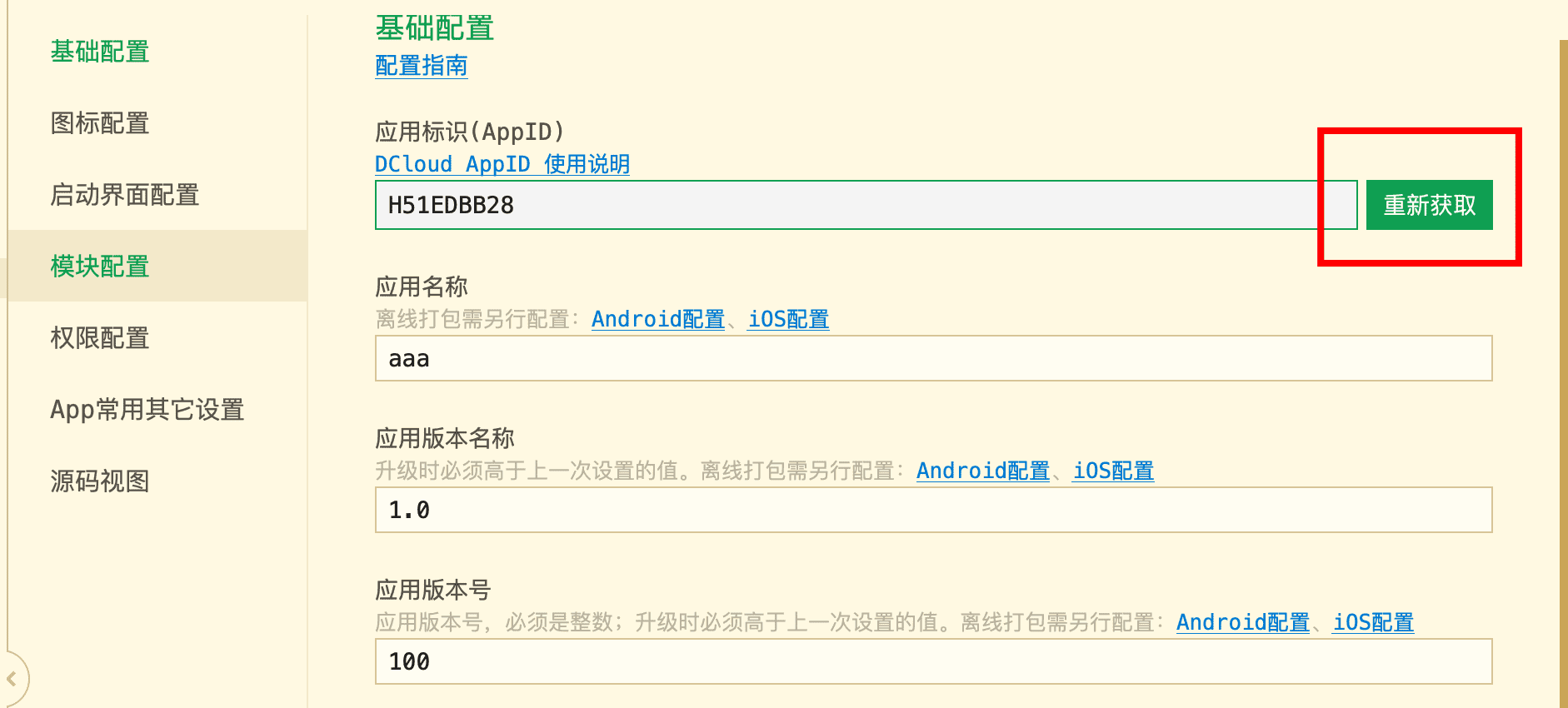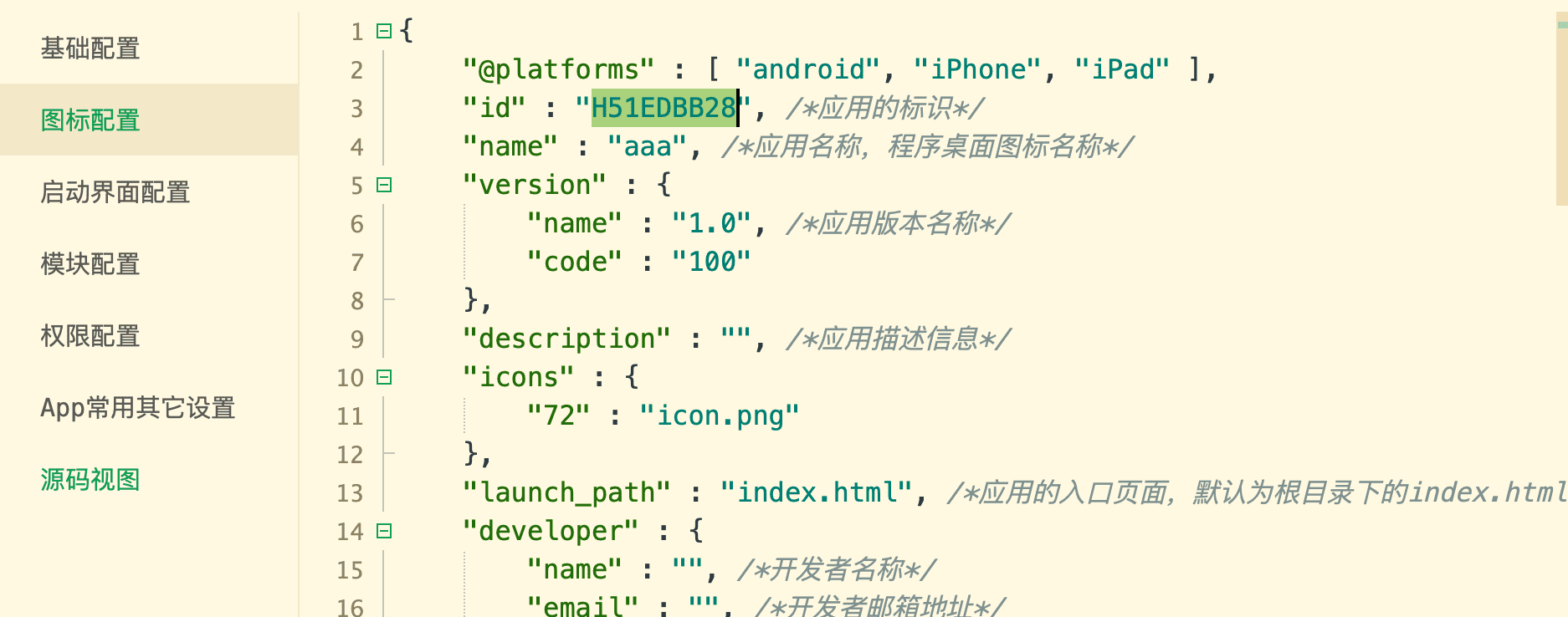English | 简体中文
The extension toolkit of h5plus is divided into two parts: "command line tool" and "API lib"
-
oh5plus command line tool
- Initialization function to generate necessary files in the project, such as manifest.json
- Version number update function, synchronize version and versionCode in package.json and manifest.json
- Forward/reverse sync function
public/manifest.json -> dist/manifest.jsondist/manifest.json -> public/manifest.json
- Command to generate wgt delta package function, which will be useful in CI
-
API lib
- execPlus executor
- System platform detection
- App version update check and automatic upgrade
$ npm install @ombro/h5plus
# pnpm
$ pnpm install @ombro/h5plus@ombro/h5plus comes with a command line tool oh5plus. You can use it to help you manage a plus project and reduce some tedious manual operations. It includes the following commands
- oh5plus init: initialization
- oh5plus update-version: update version number
- oh5plus sync: forward/reverse synchronization
- oh5plus wgt: generate wgt incremental package
oh5plusis only used as abinentry and does not provide export, so you cannot call oh5plus through API.
Initialize plus in an existing project directory and generate the necessary files:
${cwd}/public/manifest.json-
${cwd}/manifest.json(if the public directory does not exist)
It depends on an existing mobile project (framework independent). You can create a mobile project without plus through
@vrn-deco/clifor testing
# Execute in the project where @ombro/h5plus is installed
pnpm oh5plus initIf you executed this command in a Vue or React project, the public/manifest.json file should have been created by now
Note: oh5plus depends on $cwd (current working directory), so you need to make sure to execute the command in the project root directory (or package root directory), or add it to the scripts of package.json
This note also applies to subsequent commands and will not be repeated
There is another important step after this, execute a build to compile the project, import the dist/ directory into HBuilder, open dist/manifest.json, and re-obtain the new AppID in the basic configuration
Then open the source code view and copy the id just generated from dist/manifest.json back to public/manifest.json (This step can be processed through the plus sync --reverse command introduced later)
Also don’t forget to modify fields such as the application name (name), which can be modified directly in
public/manifest.json
Update version number function, synchronize version and versionCode in package.json and manifest.json
This command should be used before each build
pnpm oh5plus update-versionYou will then be asked for the version number. Enter the appropriate version number and press Enter to confirm.
Version number rules:
- Must satisfy the regular expression
/\d+\.\d+\.\d+/, for example (0.1.5,1.10.2) - Cannot be less than the previous version number (can be equal)
This command will simultaneously update the version field of package.json, the version.name and version.code fields of public/manifest.json, and the version.code conversion rules are:
1.0.0 -> 100000.1.0 -> 1001.2.3 -> 102032.3.11 -> 20311
Sync content between public/manifest.json and dist/manifest.json
This command can be used after each modification of a unilateral file. You need to ensure that both files exist at the same time, otherwise the command will report an error.
Forward synchronization is to copy the contents of public/manifest.json to dist/manifest.json
pnpm oh5plus sync --forwardUsually you don't need forward synchronization, because the project will copy the manifest.json file in public to dist during the build process
Reverse synchronization is to copy the contents of dist/manifest.json to public/manifest.json
pnpm oh5plus sync --reverseAnti-phase synchronization will come in handy after you modify
dist/manifest.jsonthrough HBuilder
You can also execute the sync command without options
pnpm oh5plus syncIt will judge the last update time of the public/manifest.json and dist/manifest.json files to decide whether to use forward update or reverse update
One rule to remember: never modify both files at the same time
The content in the dist directory can be generated into an incremental package of ${AppID}.wgt. This incremental package can replace the resource files in the current apk/ipa in h5plus runtime to achieve hot update purposes.
This command should be used after build. If dist does not exist, the command will report an error
pnpm oh5plus wgtAfter the command is executed, unpackage/release/${AppID}.wgt will be created in the dist. It is recommended to upload the entire dist content to the server and cooperate with the upgrade function provided in the API library to check for updates and install wgt Bag
The most commonly used command combination is: scripts.build: oh5plus update-version && your build command && oh5plus wgt
You can use this command to package and deploy in CI, and the App will be automatically updated to the latest version.
##APIlib
@ombro/h5plus provides some enhanced API functions used at runtime
type ExecPlusCallback<T = any> = (plus: any) => T | Promise<T>
function execPlus<T = any>(cb: ExecPlusCallback<T>): Promise<T>The execPlus function receives a callback function that depends on the plus environment, and always ensures that the callback function is called only in the plus environment (that is, within the Webview container containing h5plus), and passes in the plus object
-
execPluscan be called anywhere - You no longer need to do judgments like
typeof plus !== 'undefined'or event listening forplusready-
execPluswill ensure that the callback function you pass in is only called whenplusexists - And pass
plusitself to the parameter of the callback function (this can solve the problem of needing to declare the global variableplusin ts)
-
Sample code:
import { execPlus } from '@ombro/h5plus'
// The callback function will only be executed in the plus environment. Accessing this part of the code directly in the browser will be ignored.
execPlus((plus) => {
//Vertical screen lock
plus.screen.lockOrientation('portrait-primary')
// Change the text color of the mobile phone battery bar to white
plus.navigator.setStatusBarStyle('light')
// ...
})
execPlusshould always be used where plus logic is included
Determine the current operating system
type Platform = {
iPhone: boolean // Whether the current system is iOS
iPad: boolean // Whether the current system is iPadOS
Android: boolean // Whether the current system is Android (Hongmeng's judgment is processed here, it is still true on Huawei)
}Sample code:
import { platform } from '@ombro/h5plus'
platform.iPhone
platform.iPad
platform.AndroidTwo functions, checkVersion() and upgrade(), are provided to provide app with available update checking and automatic installation of updates.
This function checks whether a new version exists by comparing the online and local manifest.json
/**
* Version check option
*/
type CheckVersionOptions = {
/**
* manifest http url
*/
manifestUrl: string
/**
* Whether to be silent (no toast will pop up)
* Default false
*/
silent?: boolean
}
/**
* version check results
*/
type CheckVersionResult = {
/**
* is there a new version?
*/
hasNewVersion: boolean
/**
* application id
*/
appid: string
/**
* latest version number
*/
version: string
/**
* latest version code
*/
versionCode: number
/**
* manifest url
*/
manifestUrl: string
/**
* online manifest object
*/
manifest: any
}
function checkVersion(options: CheckVersionOptions): Promise<CheckVersionResult>Sample code:
import { checkVersion } from '@ombro/h5plus'
const { hasNewVersion, version } = await checkVersion({
// The directory accessed by /app is the dist deployment directory. It is recommended to bring a timestamp to prevent the json file from being affected by the cache set by nginx.
manifestUrl: `http://yourproject.com/app/manifest.json?t=${Date.now()}`,
})
if (hasNewVersion) {
console.log(`New version found: ${version}`)
}It is worth mentioning that this function does not have to be called in the callback function of
execPlus, because the internal implementation of the function already usesexecPlus. Of course, there will be no problem in adding another layer.
This function checks whether a new version exists by comparing the online and local manifest.json (during this period checkVersion() will be called). When a new version exists, the wgt resource package will be downloaded and automatically installed.
/**
* Upgrade options
*/
type UpgradeOptions = CheckVersionOptions & {
/**
* wgt download address or function that returns wgt download address
* The relative address of manifestUrl is taken by default './unpackage/release/${appId}.wgt'
*/
wgtUrl?: string | ((result: CheckVersionResult) => string)
/**
* Behavior after successful installation of wgt
* - `restart`: directly restart the application
* - `none`: No processing is done, the installed update will take effect the next time the app is launched
* Default is 'none'
*/
behavior?: 'restart' | 'none'
}
function upgrade(options: UpgradeOptions): Promise<void>Sample code:
import { upgrade } from '@ombro/h5plus'
upgrade({
// The directory accessed by /app is the dist deployment directory. It is recommended to bring a timestamp to prevent the json file from being affected by the cache set by nginx.
manifestUrl: `http://yourproject.com/app/manifest.json?t=${Date.now()}`,
// behavior: 'restart' // If you want to restart the app (apply the new version) immediately after installing the wgt file
})If you use
oh5plusto generate wgt afterbuildand publish dist, then you do not need to pass inwgtUrl, otherwise you need to specify it manuallyThe
upgradefunction already contains thecheckVersionoperation, so there is no need to callcheckVersionbefore calling itLike
checkVersion, the internal implementation ofupgradealso usesexecPlus



